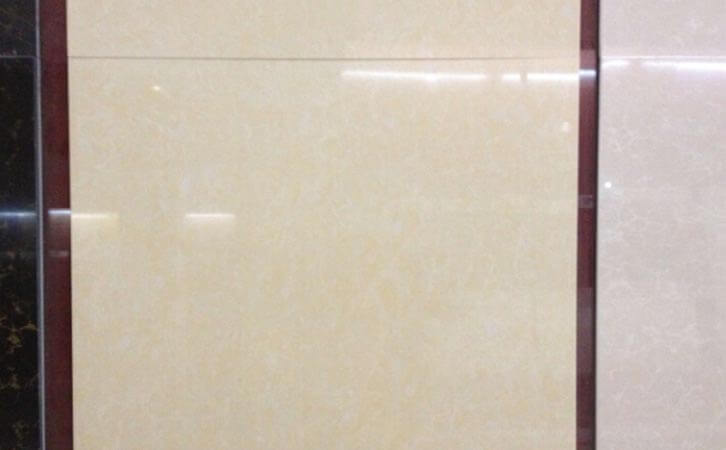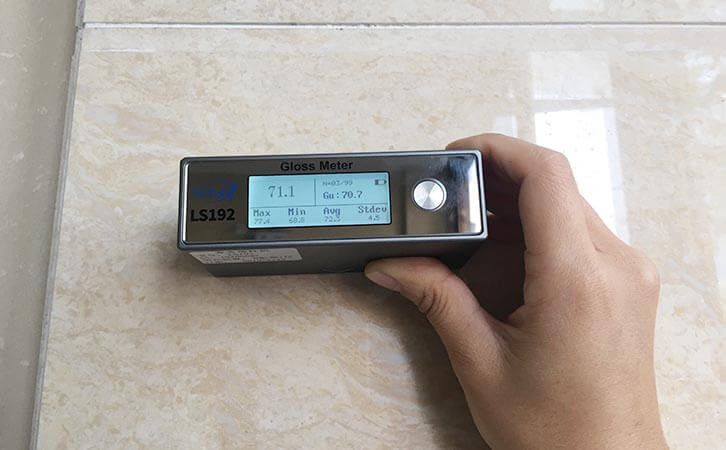What is the Difference between Polished and Vitrified Tiles?
1. The difference between the concept of polished tiles and vitrified tiles
(1)What is polished tile?
Polished brick is a kind of bright brick made by polishing the surface of the whole brick body and belongs to a kind of whole brick. Compared to whole-body tiles, polished tiles have a much smoother surface. Polished tiles are hard and wear-resistant, suitable for use in most indoor spaces except toilets and kitchens, such as balcony, exterior wall decoration, etc.
(2) What is vitrified tile?
Vitrified brick is a kind of bright brick made by grinding the surface of the whole brick body and belongs to a kind of whole brick. Ceramics with water absorption of less than 0.5% are called vitrified tiles. Polished tiles with water absorption of less than 0.5% are also vitrified tiles.
Summary: The water absorption rate is lower than 0.5%, which is a vitrified tile. Above 0.5%, it can only be a polished tile, not a vitrified tile. The vitrified polished tile can be obtained by polishing the vitrified tile.
2. The difference between the production process of polished tiles and vitrified tiles
(1)The manufacturing process of polished tiles
Polished tiles are made from powder of clay and stone, pressed and then fired. The front and back have the same color and luster, without glazing. After burning, the surface is polished, so that the front is smooth and beautiful.The back is the original appearance of the brick.
(2) Production process of vitrified brick
Vitrified tiles are similar to polished tiles, but they have higher production requirements, better presses, higher densities and higher firing temperatures. The vitrified tile is an intensified polishing transfer and the surface generally does not need polishing treatment to be very bright. It can solve the title problems such as polishing transfer to some extent. Of course, the price of vitrified tile is more expensive than polishing.
3. How to distinguish between vitrified tiles and polished tiles?

The polished tiles are directly polished with the brick blank of the whole body, although the surface is bright. The pores will be left when polished, so the colored liquid easily penetrates. When distinguishing between vitrified tiles and polished tiles, the simplest test is to write a few words on the surface of the brick with a pen. If the polishing is poor, wipe it away immediately after writing. It may not be wiped clean. No matter how good the polishing turn, if you write the word and wipe it after 10 minutes, there will be traces that will never be wiped off, because the ink has penetrated into the brick.
4. Gloss test of vitrified tiles and polished tiles
Gloss, as the surface characteristic of an object, depends on the surface's ability to specularly reflect light. The so-called specular reflection refers to a reflection phenomenon where the reflection angle is equal to the incident angle. The glossiness test of vitrified tiles and polished tiles can be measured by Linshang LS192 gloss meter. The LS192 gloss meter is the classic gloss meter of Linshang Technology. What are the advantages? Let’s give you a brief introduction below.
LS192 gloss meter measure marble gloss
● Repeatability: 0-100: ± 0.2; 100-1000: ± 0.2%, which meets the national first-class machine standard. The data can be compared with BYK gloss meter.
● Measurement range: 0-1000GU, which can measure high gloss products, such as metal, glass and other materials.
● Function: Although the instrument is small and compact, it can be powerful. It has statistical functions of maximum, minimum, average and standard deviation values. The statistical data setting range is 10-99 groups. The instrument performs self-calibration when it is turned on. Importantly, there is software that can connect to computer and print test reports.
The above are some basic features of Linshang LS192 gloss meter, which are also most concerned and recognized by customers. If you want to know more about the Linshang LS192 gloss meter, consult us at anytime!
